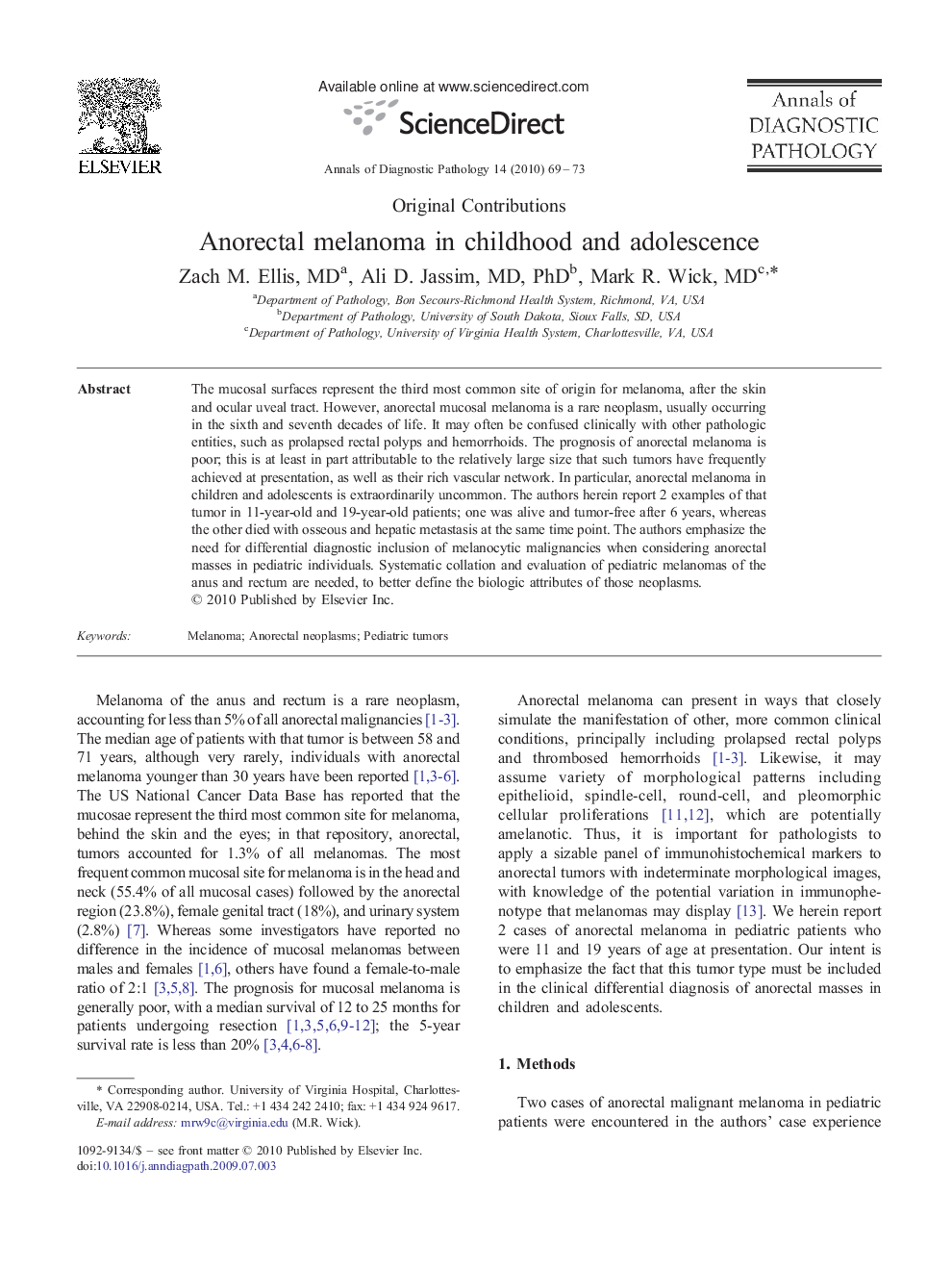| Article ID | Journal | Published Year | Pages | File Type |
|---|---|---|---|---|
| 4130120 | Annals of Diagnostic Pathology | 2010 | 5 Pages |
The mucosal surfaces represent the third most common site of origin for melanoma, after the skin and ocular uveal tract. However, anorectal mucosal melanoma is a rare neoplasm, usually occurring in the sixth and seventh decades of life. It may often be confused clinically with other pathologic entities, such as prolapsed rectal polyps and hemorrhoids. The prognosis of anorectal melanoma is poor; this is at least in part attributable to the relatively large size that such tumors have frequently achieved at presentation, as well as their rich vascular network. In particular, anorectal melanoma in children and adolescents is extraordinarily uncommon. The authors herein report 2 examples of that tumor in 11-year-old and 19-year-old patients; one was alive and tumor-free after 6 years, whereas the other died with osseous and hepatic metastasis at the same time point. The authors emphasize the need for differential diagnostic inclusion of melanocytic malignancies when considering anorectal masses in pediatric individuals. Systematic collation and evaluation of pediatric melanomas of the anus and rectum are needed, to better define the biologic attributes of those neoplasms.
